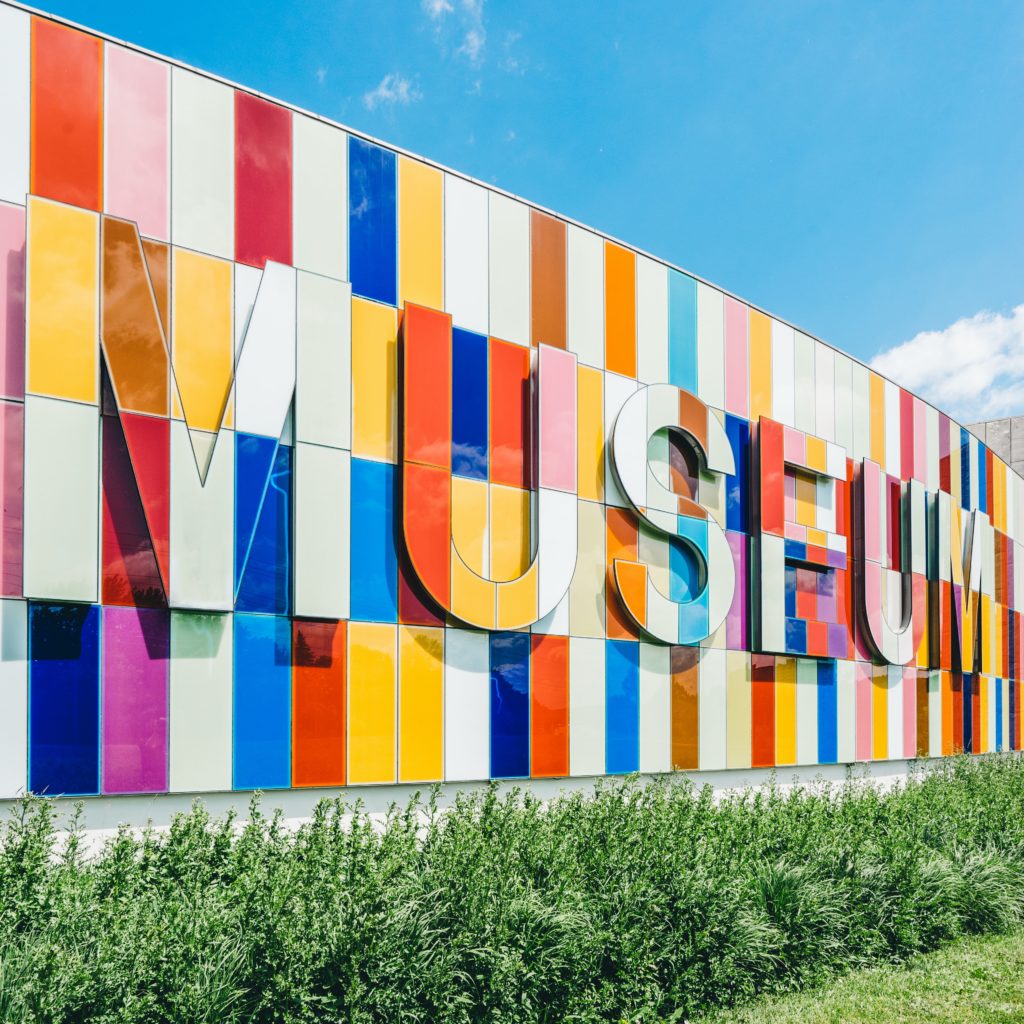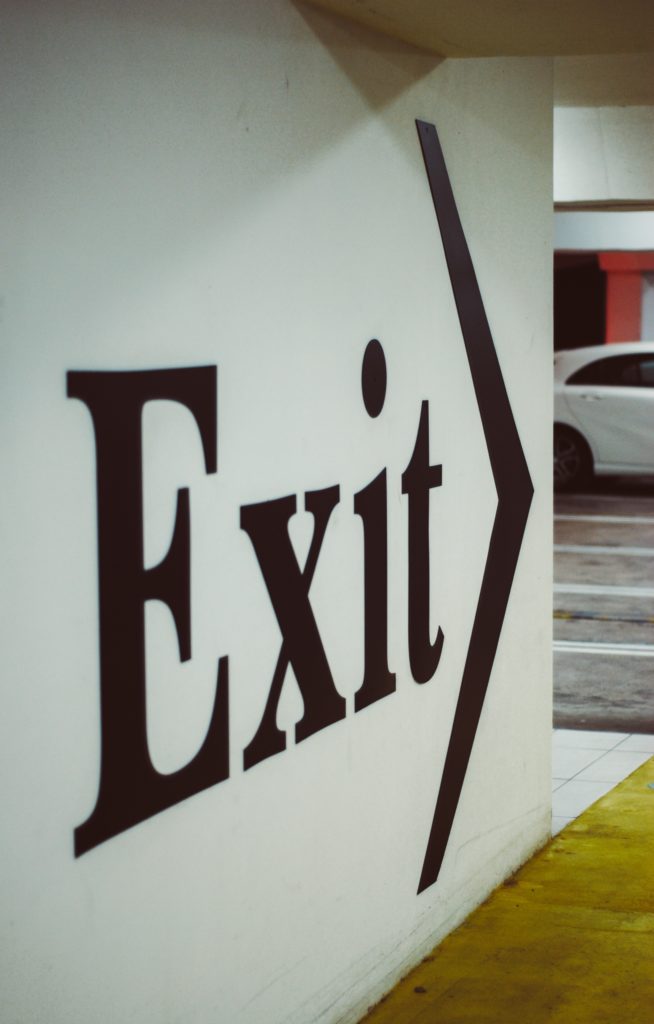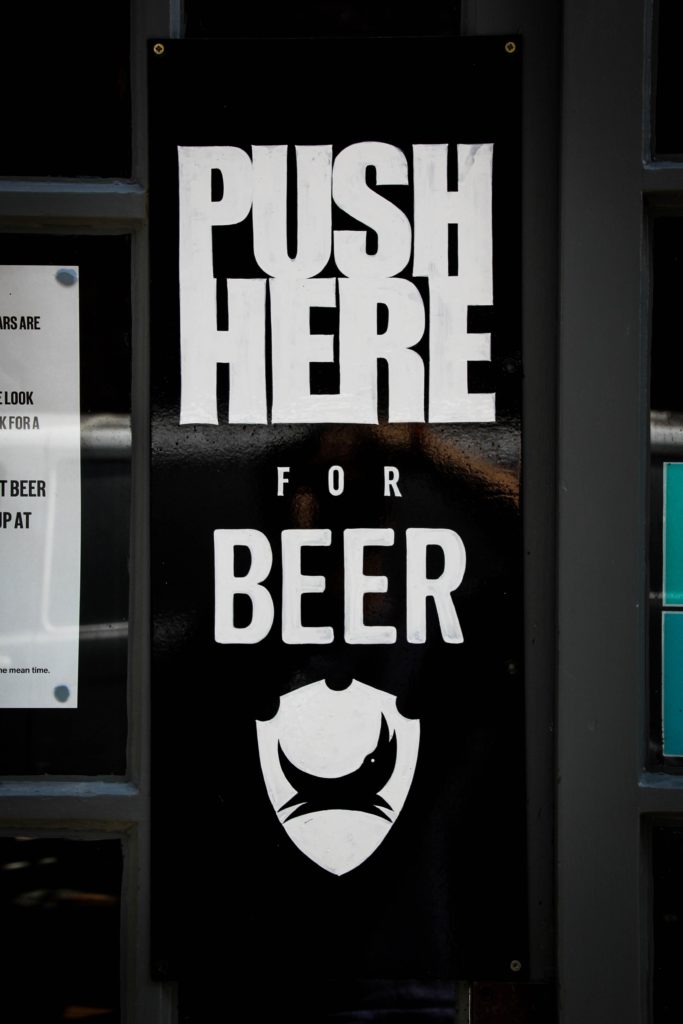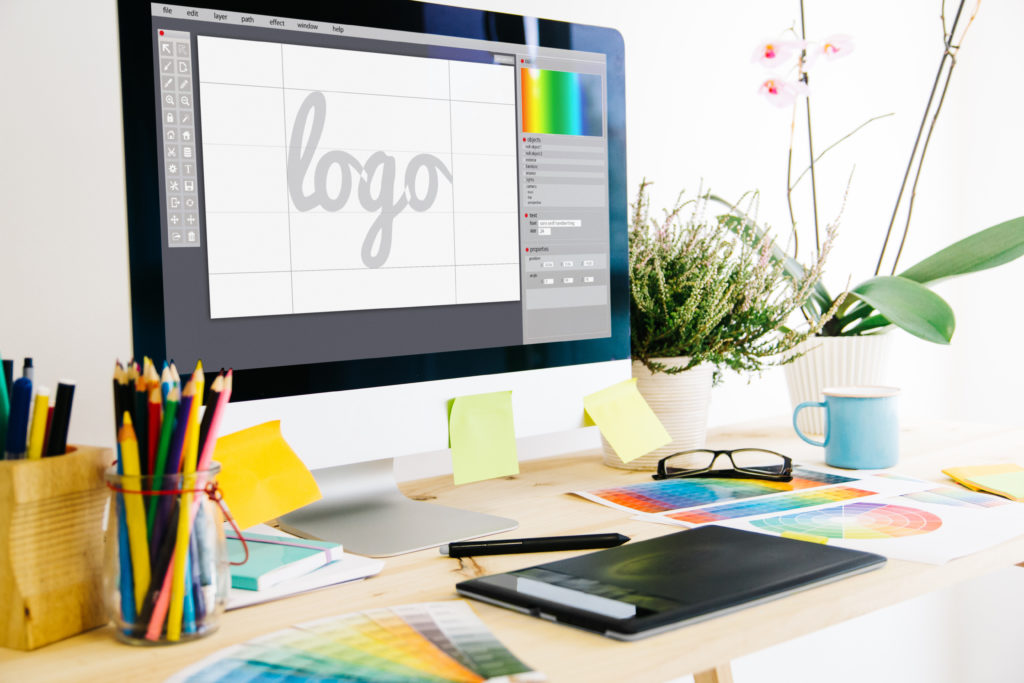Environmental Graphic Design :: Introduction
Although environmental design includes much more than its graphic aspect and even though that part is limited for graphic designers, we decided to devote a blog to this topic, which belongs more to the category of architecture, not so much graphic design.
One of the reasons is that graphic designers often collaborate with architects on solutions for clients as part of the creation of visual and brand identities for companies, so in collaboration they create specific looks for offices, shops, etc. Another reason is that a small part of environmental design also falls under the domain of graphic design, such as the design of shop windows, small signs for offices and murals inside the offices, etc. All these items can be done by a graphic designer who is experienced and trained in such design. For all other items of environmental design, the professional help of an architect should be sought. Of course, if the overall design of the office is created by an architect, he is the one who will either design it himself, or give guidelines to the graphic designer on how certain elements should look in order to fit into the overall aesthetics of his work.
So let’s start with an explanation of what environmental graphic design (EDG) is.
What is environmental graphic design?
Environmental graphic design is a multifaceted field that deals with both aesthetic and functional aspects of space. It is the design of graphics, such as signs, wayfinding systems, environmental branding, etc. In other words, it focuses on the use of graphics to improve the built environment. Designers use a variety of design disciplines, including graphic design, architecture, interior design, and landscape architecture, to create functional and harmonious environments. Environmental graphic design is a relatively new field, but it has its roots in a number of older disciplines, such as sign making, mural painting and architecture.

Why is the environment graphic design important?
One of the most important aspects of environmental graphic design is the ability to create the feeling and atmosphere of a place. This is especially important in public spaces where people are unfamiliar with their surroundings. A good environmental graphic design can help people orient themselves and give them a sense of belonging to the space.
Another important aspect of environmental graphic design is the ability to tell a story. This can be done by using graphics, murals and other visual elements. When executed well, environmental graphic design can leave a strong and lasting impression on those who see it.
Types of environmental graphic design
There are many different types of environmental graphic design, each with its own advantages and disadvantages.
Some of the most common types of environmental graphic design and how they can be used to achieve different goals:
Signage and Wayfinding Systems
Signage and wayfinding systems are designed to help people navigate and understand complex environments. They can be used to provide directional information, identify specific locations, and more.
Advantages:
1. It can help people navigate complex environments
2. It can be used to provide important information
Disadvantages:
1. Design and implementation can be expensive
2. It can be difficult to change or update

Branded Environments
A branded environment is one where the brand identity is heavily integrated into the design. This can be a great way to create a strong and unique brand identity, but it’s important to ensure the brand doesn’t dominate the overall design.
Advantages:
1. It can create a strong and unique brand identity
2. It can be used to communicate brand values
Disadvantages:
1. If not done carefully, branding can overwhelm design
2. It can be difficult to change or update branding without changing the design

Exhibition
An exhibition is a type of environmental graphic design that is designed to display products, works of art or other objects. It can be used to create an experience that allows people to interact with the objects on display.
Advantages:
1. It can create an immersive experience
2. It can be used to display products or artwork
Disadvantages:
1. Can be expensive to design and implement
2. It can be difficult to change or update
Interactive media
Interactive media is a type of environmental graphic design that uses technology to create interactive experiences. This can be done using touch screens, projected images, etc.
Advantages:
1. It can create interactive and engaging experiences
2. It can be used to provide information in a dynamic manner
Disadvantages:
1. Can be expensive to design and implement
2. May require ongoing maintenance
Interactive Experience
Interactive experiences are designed to immerse visitors in a specific experience. This can be achieved by using different sensory elements.
Advantages:
1. It can be very impressive and attractive
2. It can be used to create powerful and emotional experiences
Disadvantages:
1. It can be difficult to change or update
2. Can be expensive to design and build
Some of the challenges of the environmental graphic design
One of the biggest challenges is the need to constantly adapt to new technology. This is especially true for wayfinding signs, which often need to be updated to reflect changes in the built environment.
Another challenge is the need to create a design that is both functional and aesthetically pleasing. This balance is often difficult to establish, but it is essential for good environmental graphic design.
Finally, environment graphic designers often have to deal with strict regulations and guidelines. This is especially true for public spaces, where signs and other elements must meet certain code requirements.
Environmental graphic design is a constantly evolving field. As new technology emerges and the built environment changes, designers must be prepared to adapt their designs. It can be a challenge, but it’s also one of the things that makes environmental graphic design such an exciting and dynamic field.
Some myths of environmental graphic design
One of the most common misunderstandings about the graphic design of the environment is that it deals only with the aesthetics of the space. While it’s true that it can improve the visual appeal of a space, that’s only one aspect of what it does. Environmental graphic design also deals with functional aspects of space, such as wayfinding and navigation.
Another misunderstanding is that it is only used for public spaces. While environmental graphic design can certainly be used to enhance public spaces, it is also used in a variety of other settings, such as businesses, schools, and hospitals.
CONCLUSION
As we said in the introduction, although the environmental graphic design falls under architecture, due to the parts that are closely related to graphic design, we decided to cover this topic on our blog.
In our case, we worked many times with wonderful architects and helped them realize some parts of their vision to the satisfaction of both the client and the architects themselves. Also, many times we have done the design of shop windows and office murals for clients, and the design of smaller signs, everything that falls under this category, but only is a small part of it. Despite this, the environmental graphic design, with the exception of these minor exceptions, should be left to experts in the field of architecture.
For more articles on graphic design, visit our blog.
If you need any graphic design services, feel free to contact us by email or via the contact form.
Thank you for reading!





